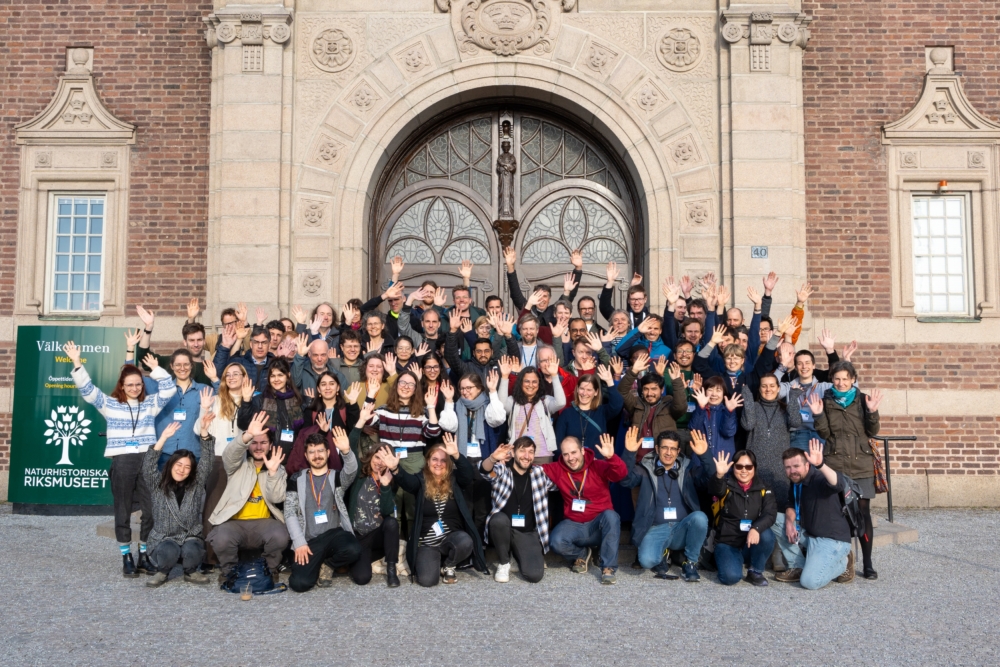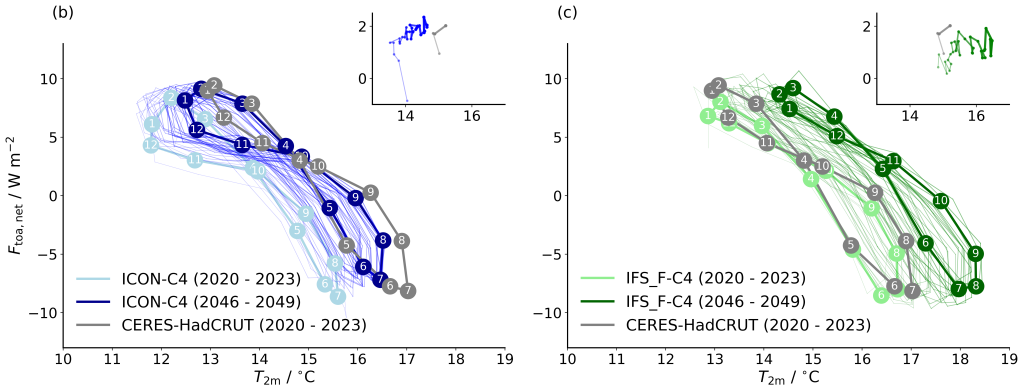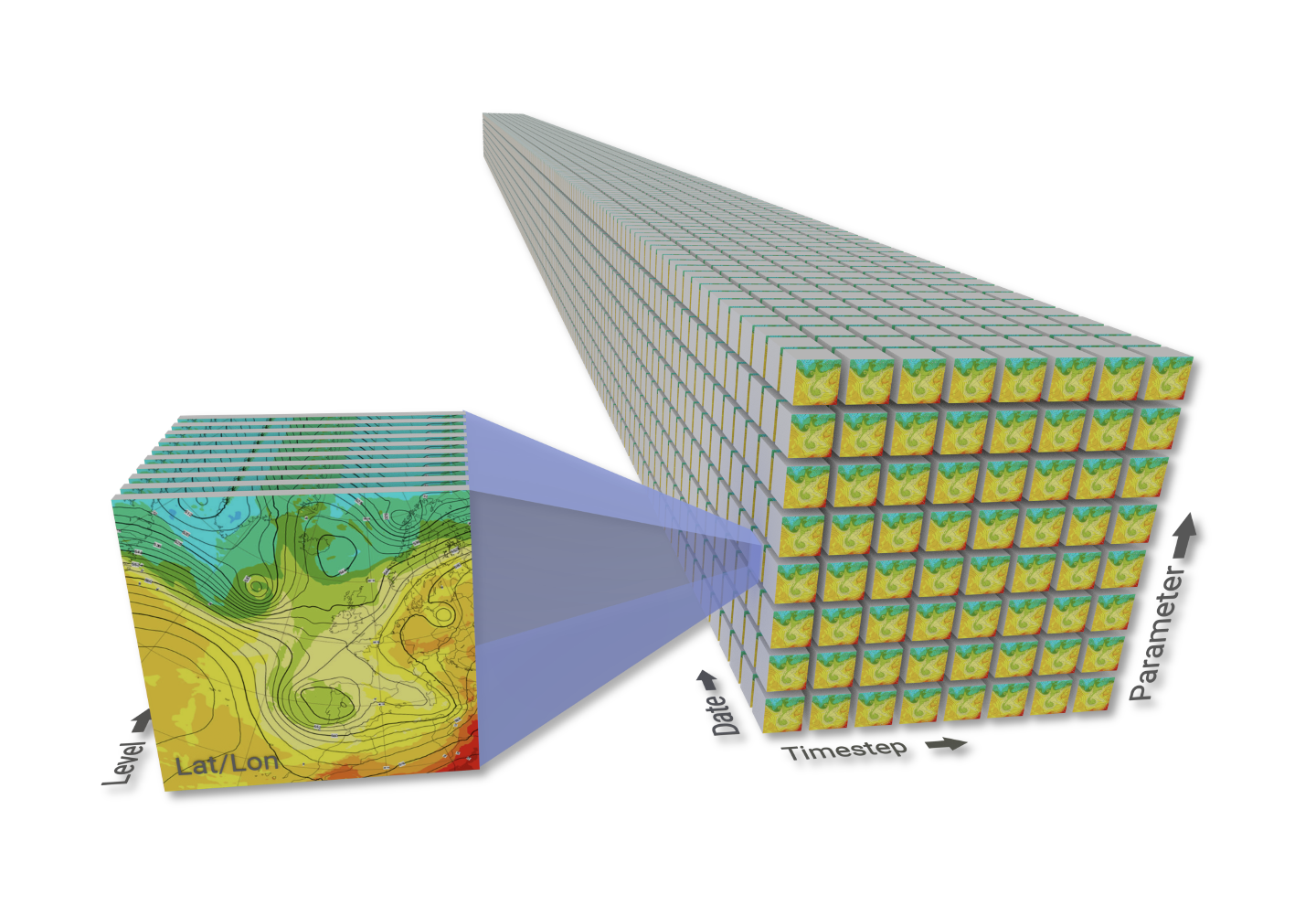
What was once a distant ambition is now a scientific reality. Launched in 2021 under the EU Horizon 2020 programme, the Next Generation of Earth Modelling Systems (nextGEMS) project set out to make significant advances in climate modelling by explicitly resolving key Earth system processes at kilometre-scale resolution. A new highlight paper, published in the Geoscientific Model Development journal of the European Geosciences Union, showcases the project’s major achievements.
nextGEMS successfully met its central goal: conducting global multi-decadal simulations at kilometer-scale (km-scale) using two state-of-the-art Earth system models, ICON (ICOsahedral Non-hydrostatic model) and IFS-FESOM (Integrated Forecasting System coupled to the Finite-volumE Sea ice-Ocean Model).
The study was led by Hans Segura, group leader at the Max Planck Institute for Meteorology*, with significant contributions from ECMWF scientists Xabier Pedruzo-Bagazgoitia and Thomas Rackow. In total, 139 scientists co-authored the paper, including 17 from ECMWF, highlighting the depth and diversity of expertise required to advance global km-scale simulations. The nextGEMS community spans disciplines from Earth system to computing and social sciences.
The paper revisits the original motivations behind nextGEMS, particularly the limitations of coarse-resolution global climate models in capturing mesoscale phenomena such as tropical cyclones, convective storms, and ocean eddies. These limitations drove the push toward km-scale resolutions, enabling more realistic simulations of regional climate impacts – crucial for informing local adaptation and mitigation strategies.
Recent advances in pre-exascale and exascale supercomputing, and in the scalability of Earth system models, have made it possible to run these computationally intensive multi-decadal km-scale simulations, opening new possibilities in climate science.

Hackathons, the engine for innovation
At the heart of nextGEMS were four fast-paced development cycles, running from late 2021 to early 2024. Each cycle lasted around eight months and culminated in large-scale hackathons – intensive, collaborative events where scientists, engineers, and high-performance computing (HPC) experts worked closely together. These gatherings were crucial for analyzing simulations, optimizing model code, and fine-tuning physical processes. Hackathons were also instrumental in co-discovering the best approaches for an efficient analysis of the unprecedented amount of data produced by the models. More than 130 participants from across Europe and beyond took part in these dynamic events.
- Cycle 1 laid the foundation by establishing baseline model versions. It revealed initial energy imbalances and computational bottlenecks, setting the stage for targeted improvements in later cycles.
- Cycle 2 introduced new radiation schemes and improved coupling strategies, while beginning to tackle mass and energy conservation challenges.
- Cycle 3 marked a breakthrough: IFS-FESOM achieved an energetically consistent climate simulation at km-scale resolutions, with stable surface temperatures and realistic top-of-atmosphere radiation balances.
- Cycle 4 delivered the final simulations: 30-year global runs at approximately 10 km resolution under the SSP3-7.0 scenario. These were performed on the German Climate Computing Centre’s Levante supercomputer, using both ICON and IFS-FESOM. ICON reached a milestone by completing its first energetically consistent 30-year global simulation at km-scale, resolving persistent energy leaks through targeted improvements to its dynamical core and turbulence schemes.
On the technical side, both models demonstrated impressive computational performance. For instance, ECMWF’s IFS-FESOM achieved a throughput of 600 simulated days per day (SDPD), using just 9% of Levante’s CPU nodes, and a throughput of 414 SDPD in the case of ICON – a testament to the efficiency and scalability of the modelling systems that were further developed under nextGEMS.
Core scientific insights
The nextGEMS highlight paper evaluates four central scientific questions that guided the model development and evaluation process. These questions reflect the project’s ambition to push the boundaries of climate modelling at km-scale resolution.
1. Radiation Balance. Can we adjust, in relatively short time, the radiative properties and formulation mechanisms of clouds in order to correct the global radiation balance and limit the drifts in global surface temperature?
By Cycle 4, both ICON and IFS-FESOM achieved a top-of-atmosphere radiation budget close to observations, eliminating the large temperature drifts seen in early simulations. ICON introduced a novel cloud inhomogeneity factor based on lower-tropospheric stability, improving radiative fluxes. IFS-FESOM refined cloud microphysics and cloud cover, enhancing both low and high clouds in key regions, resulting in realistic shortwave and longwave radiation balances.
2. Representation of Mean Climate: Are key features of the mean climate correctly represented in a km-scale simulation with an energetically consistent climate?
IFS-FESOM reproduced the tropical rain belt and Pacific sea surface temperature (SST) gradients with high fidelity, including a well-developed West Pacific warm pool and a significantly reduced “double ITCZ” bias (a common model issue connected to the Inter-Tropical Convergence Zone). ICON, despite minimal parameterization approach, captured the tropical rain belt over land and the eastern Pacific realistically, though some biases remain in oceanic regions.
3. Local and Synoptic Phenomena: Does an energetically consistent climate constrain the patterns of local-, meso- and synoptic-scale phenomena?
Both models showed differing degrees of soil–precipitation coupling, indicating that km-scale resolution alone does not guarantee consistent behavior across models. The role of parametrized convection is currently under investigation as a potential driver of these differences.
Encouragingly, both ICON and IFS-FESOM showed good agreement in the geographical distribution of large-scale blocking events, likely aided by the improved representation of orography at high resolution.
4. Emergence of Regional Patterns: Over what simulation times do regional patterns emerge?
In both models, recognizable regional climate features, such as precipitation zones, SST structures, and coupled land–atmosphere signals, emerged within the first few years of simulation. This is a promising result for further improved multi-decadal simulations, as it illustrates that relatively short simulations already yield meaningful insights for guiding model development and evaluation of km-scale models.


2-meter temperature and top-of-atmosphere radiation balance from ICON-C4 (b) and IFS_F-C4 (c). Thick lines indicate averages over 2020
to 2023 (light colors) and 2046 to 2049 (dark colors), where months are labeled with numbers. Thin lines indicate individual cycles from
2020 to 2049, where widths and opacities increase with time. Gray line shows the observational reference from HadCRUT Credit: GMD EGUsphere
nextGEMS feeding into DestinE
nextGEMS has been instrumental in shaping the models and workflows that underpin Destination Earth’s (DestinE) Climate Change Adaptation Digital Twin (Climate DT), which aims to build an operational framework for producing multi-decadal climate projections at km-scales. By pushing the boundaries of climate modelling, nextGEMS has helped lay a strong foundation for delivering globally consistent information at scales at which the impacts of climate change and extreme events are observed. The insights and innovations developed during nextGEMS will continue to inform and enhance the evolving DestinE system.
The collaborative efforts of MPI, ECMWF, and the broader nextGEMS community have led to pioneering advances in scientific workflows and data handling. Notably, the harmonization of model output onto HEALPix grids enables seamless visualization and analysis across scales. Additionally, the integration of nextGEMS simulation output with Zarr-based data formats and cloud-native workflows marks a significant step toward scalable, efficient climate data management.
From a modelling perspective, ICON’s minimal-parameterization design demonstrates that explicit representation of convection, with reduced reliance on tuning, can still yield energetically consistent, multi-decadal simulations. This opens new avenues for process-level climate research. Meanwhile, IFS-FESOM, building on ECMWF’s operational forecasting legacy, combines finely tuned atmospheric parameterizations with high computational efficiency, delivering realistic global climate information and robust computational performance.
Both models now contribute directly to the DestinE Climate DT, which through the operationalisation of climate projections at unprecedented resolutions supports adaptation planning, impact assessments, and scientific discovery. nextGEMS has turned the long-standing ambition of global, km-scale Earth system modelling into a practical reality. As nextGEMS concluded in September 2025, its legacy of advanced Earth system models, innovative workflows, and collaborative breakthroughs will continue to feed in climate science and digital twin technology.
*The lead authors are Hans Segura (MPI), Xabier Pedruzo-Bagazgoitia (ECMWF), Philipp Weiss (University of Oxford), Sebastian K. Müller (University of Trento), Thomas Rackow (ECMWF), Junhong Lee (MPI), Edgar Dolores-Tesillos (University of Bern) and Imme Benedict (Wegenigen University).
Destination Earth is a European Union funded initiative launched in 2022, with the aim to build a digital replica of the Earth system by 2030. The initiative is being jointly implemented by three entrusted entities: the European Centre for Medium-Range Weather Forecasts (ECMWF) responsible for the creation of the first two ‘digital twins’ and the ‘Digital Twin Engine’, the European Space Agency (ESA) responsible for building the ‘Core Service Platform’, and the European Organisation for the Exploitation of Meteorological Satellites (EUMETSAT), responsible for the creation of the ‘Data Lake’.
We acknowledge the EuroHPC Joint Undertaking for awarding this project strategic access to the EuroHPC supercomputers LUMI, hosted by CSC (Finland) and the LUMI consortium, Marenostrum5, hosted by BSC (Spain) Leonardo, hosted by Cineca (Italy) and MeluXina, hosted by LuxProvide (Luxembourg) through a EuroHPC Special Access call.
More information about Destination Earth is on the Destination Earth website and the EU Commission website.
For more information about ECMWF’s role visit ecmwf.int/DestinE
For any questions related to the role of ECMWF in Destination Earth, please use the following email links:


